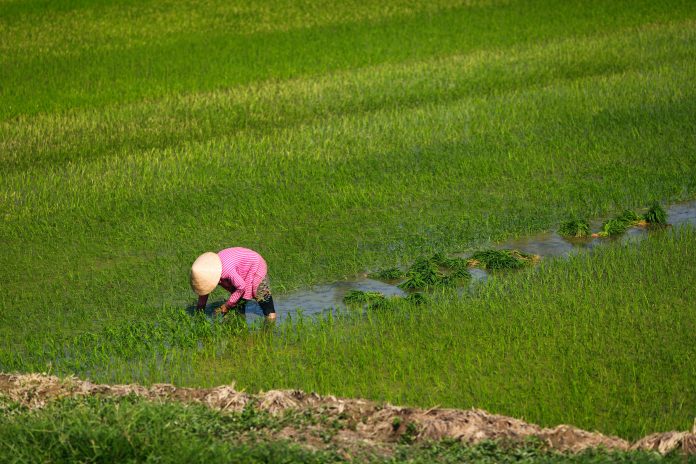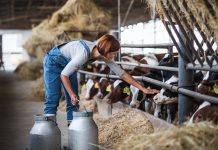Jyotsna Puri (Jo) PhD, Director of the Environment, Climate Gender, Youth, Nutrition and Social Inclusion Division at UN International Fund for Agricultural Development, imagines a future-fit world when it comes to food and nutrition
Estimates show that an additional 150 million people will be pushed into poverty and hunger by the end of 2021. Unfortunately, it has taken the pandemic to show that we need to move from siloed thinking to systems thinking. What does this mean for future-fit thinking? Here are a few recommendations:
Think circular
First, we must think circular. This means that it is no longer possible for us to decouple the consumer and producer nature of most individuals: Especially in rural economies, recognising this twin identity of most people is critical. In turn, this means that incentives for both consumption and production systems must change in lock-step. As we change producer prices, we must carefully consider the implications for food consumption patterns.
Complexity
Second, complexity can be a good thing. We know that complex systems are far more resilient than simple ones since they build on heterogeneous actors, networks and interconnections that go beyond linear pathways of dependence. Recognising this means that we can concentrate on building ourselves modularly rather than in vertical siloes. It also means that we no longer have to be stultified into inaction by thinking that problems are too large because they are complex.
More practically speaking, this means that we must recognise that especially rural areas that are typically underserved by both governments and formal safety networks are far more resilient than previously acknowledged. National and international policy should direct itself at recognising the importance of rural areas and rural people as being modular centres of stability and growth. Investments in rural areas should be a key outcome of international policy.
A critical distribution problem
Third, we must deal with a critical distribution problem. Small-scale farmers that cultivate on small plots of less than 2 ha, are responsible for producing more than one-third of the food that comes to our tables. However, they are also the ones that suffer from malnutrition and undernutrition. This contradiction is indefensible.
Recognising that our current food and nutrition crisis is a distribution problem rather than a supply problem is important progress in policy thinking. Two important considerations in this context are key. The first amongst these is we must stop ignoring the role of small-scale producers as a possible policy solution rather than a policy problem. Small-scale producers can produce far more efficiently compared to large[1]scale farmers. Their production is also far more diversified. However, they are ignored as a policy solution primarily because of the challenge of high transaction costs.
But this challenge of transaction costs can be solved once we acknowledge that solutions in this sector are required. Aggregating produce and creating multiple but locally inspired value chains that combine rural producer and small and medium-sized enterprises while linking them with urban markets can generate vast economies of scale. Therefore, shifting the focus of national and international policy to small and medium-sized enterprises in rural areas, that currently make up more than 80% of all agri-food ‘midstream’ activity in Asia and Africa, can help. Small and medium[1]sized enterprises can help link rural and urban areas, and help source and aggregate produce while building jobs, and demand in rural areas is an important policy choice. (This is being explored currently in the EC’s Farm to Fork initiative).
The second consideration here is changing the incentives for production patterns. The connections between nature-based solutions and agricultural productivity, especially for small-scale producers have become salient in the past few decades. Focusing on agroecological solutions that harness nature and ecosystems while increasing the resilience and productivity of small-scale producers (that have, incidentally, continued to produce at the same levels, despite the pandemic) will go a long way.
Facilitating the role of midstream, small and medium[1]sized enterprises in this interconnection is vital. Small and medium-sized rural enterprises can strengthen circular food systems. But they require investments. Currently, less than 2% of overall climate finance goes to small-scale producers. Larger investments are required and should focus on building infrastructure, training in entrepreneurial skills, and increasing their ability to access finance.
Imagining a future-fit world
Fourth and last, as we transition into imagining a future-fit world — while recognising the power of modular systems that can help deal with uncertainty and strengthen our resilience in the face of high climate variability — recognising the role of market incentives is key. Market incentives that include price signals, but also changing norms (that can be, in turn, affected by policy) can help signal a shift in both production patterns but also in consumption patterns. A dollar invested today in nutrition helps save $16 in avoided health costs.
Incrementally but surely, changing norms of food consumption and diversity in our diets will be critical as we go forward. Recognising the global public good benefit of this transition will be important. The role of government is key. Changing food consumption norms needs to start from a young age in schools, and it needs to be reinforced in popular culture and through incentives.











